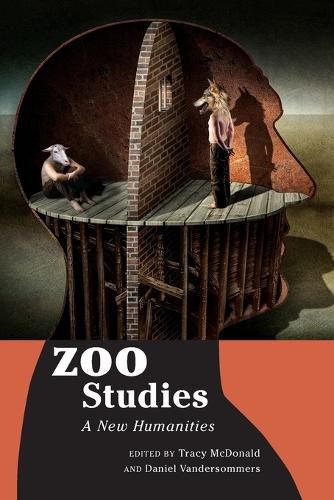Readings Newsletter
Become a Readings Member to make your shopping experience even easier.
Sign in or sign up for free!
You’re not far away from qualifying for FREE standard shipping within Australia
You’ve qualified for FREE standard shipping within Australia
The cart is loading…






This title is printed to order. This book may have been self-published. If so, we cannot guarantee the quality of the content. In the main most books will have gone through the editing process however some may not. We therefore suggest that you be aware of this before ordering this book. If in doubt check either the author or publisher’s details as we are unable to accept any returns unless they are faulty. Please contact us if you have any questions.
Do both the zoo and the mental hospital induce psychosis, as humans are treated as animals and animals are treated as humans? How have we looked at animals in the past, and how do we look at them today? How have zoos presented themselves, and their purpose, over time? In response to the emergence of environmental and animal studies, anthropologists, sociologists, philosophers, theorists, literature scholars, and historians around the world have begun to explore the significance of zoological parks, past and present.
Zoo Studies considers the modern zoo from a range of approaches and disciplines, united in a desire to blur the boundaries between human and nonhuman animals. The volume begins with an account of the first modern mental hospital, La Salpetriere, established in 1656, and the first panoptical zoo, the menagerie at Versailles, created in 1662 by the same royal architect; the final chapter presents a choreographic performance that imagines the Toronto Zoo as a place where the human body can be inspired by animal bodies. From beginning to end, through interdisciplinary collaboration, this volume decentres the human subject and offers alternative ways of thinking about zoos and their inhabitants. This collection immerses readers in the lives of animals and their experiences of captivity and asks us to reflect on our own assumptions about both humans and animals. An original and groundbreaking work, Zoo Studies will change the way readers see nonhuman animals and themselves.
$9.00 standard shipping within Australia
FREE standard shipping within Australia for orders over $100.00
Express & International shipping calculated at checkout
This title is printed to order. This book may have been self-published. If so, we cannot guarantee the quality of the content. In the main most books will have gone through the editing process however some may not. We therefore suggest that you be aware of this before ordering this book. If in doubt check either the author or publisher’s details as we are unable to accept any returns unless they are faulty. Please contact us if you have any questions.
Do both the zoo and the mental hospital induce psychosis, as humans are treated as animals and animals are treated as humans? How have we looked at animals in the past, and how do we look at them today? How have zoos presented themselves, and their purpose, over time? In response to the emergence of environmental and animal studies, anthropologists, sociologists, philosophers, theorists, literature scholars, and historians around the world have begun to explore the significance of zoological parks, past and present.
Zoo Studies considers the modern zoo from a range of approaches and disciplines, united in a desire to blur the boundaries between human and nonhuman animals. The volume begins with an account of the first modern mental hospital, La Salpetriere, established in 1656, and the first panoptical zoo, the menagerie at Versailles, created in 1662 by the same royal architect; the final chapter presents a choreographic performance that imagines the Toronto Zoo as a place where the human body can be inspired by animal bodies. From beginning to end, through interdisciplinary collaboration, this volume decentres the human subject and offers alternative ways of thinking about zoos and their inhabitants. This collection immerses readers in the lives of animals and their experiences of captivity and asks us to reflect on our own assumptions about both humans and animals. An original and groundbreaking work, Zoo Studies will change the way readers see nonhuman animals and themselves.